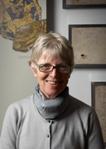12 October 2011 – Treasures and curiosities from the Royal Library, Windsor Castle
The Library is primarily used by the Queen to show to her guests after dinner parties at Windsor Castle and is not normally open to the general public. Its treasures include rare books, old master drawings (Leonardo da Vinci, Raphael, Michelangelo, Holbein, Canaletto), jewellery, insignia of Orders of Chivalry, miniature paintings, clocks; fans; maps, the shirt in which Charles I was executed, and the Queen’s description (when Princess Elizabeth, aged 11) of her father’s Coronation in 1937.
 Lecturer: Oliver Everett served in the Foreign Office, was Assistant Private Secretary to the Prince of Wales, 1978-80, and then Private Secretary to Diana, Princess of Wales, 1981-3. He was Librarian in the Royal Library, Windsor Castle, and Assistant Keeper of the Royal Archives, 1984-2002.
Lecturer: Oliver Everett served in the Foreign Office, was Assistant Private Secretary to the Prince of Wales, 1978-80, and then Private Secretary to Diana, Princess of Wales, 1981-3. He was Librarian in the Royal Library, Windsor Castle, and Assistant Keeper of the Royal Archives, 1984-2002.
9 November 2011 – Catacombs of Rome: exploring Rome in the age of Constantine
This lecture describes gold-glass, sarcophagi and inscriptions from Christian, Jewish and pagan burials of 3rd-4th centuries AD. It covers technical interest and social history, with reference to examples in the Mediterranean Gallery at the Ashmolean, and provides a snapshot of Rome in the age of Constantine when Christianity was legalized.
Lecturer: Susan Walker is Keeper of Antiquities at the Ashmolean Museum. She is currently cataloguing the Wilshere Collection of 68 objects from early 4th century Rome AD, acquired by the Ashmolean from Pusey House,Oxford.
14 December 2011 – The cult of the South Pacific: from Cook to Gauguin
This lecture looks at the enduring Western obsession with, and invention of, the so called ‘exotic’ or ‘noble savage’. Starting with the discovery of the Island of Tahiti in1767, this impact is charted through painted images of the island and their people, and of the English and European influence in this part of the world. It looks at how romanticised depictions of the island and its peoples by artists such as: William Hodges (1744-1797), Benjamin West (1738-1820), John Webber (1751-1793), and John Cleveley (c.1712-1777) bolstered these notions in the minds of Europeans. This is further explored in the 19th century through the Post-Impressionist work of the next visitor toTahiti also looking for paradise – Paul Gauguin.
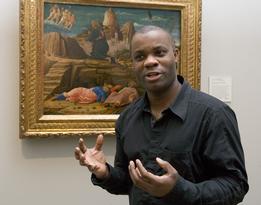 Lecturer: Leslie Primo holds a BA in Art History and an MA in Renaissance Studies from Birkbeck College, University of London. He was Visiting Lecturer in Art History at the University of Reading in 2005 and 2007, and gives lectures at the National Gallery, the National Portrait Gallery, City Literary Institute and the National Maritime Museum.
Lecturer: Leslie Primo holds a BA in Art History and an MA in Renaissance Studies from Birkbeck College, University of London. He was Visiting Lecturer in Art History at the University of Reading in 2005 and 2007, and gives lectures at the National Gallery, the National Portrait Gallery, City Literary Institute and the National Maritime Museum.
11 January 2012 – A Crisis of Brilliance: Young British Artists 1908 to 1919
In the years leading up to WWI, the Slade School of Art in London was the leading establishment in England for teaching drawing and painting. Its students included some of the most important British artists of the first half of the 20th century, including David Bomberg, Dora Carrington, Mark Gertler, Paul Nash, C.R.W. Nevinson, William Roberts, Stanley Spencer and Edward Wadsworth. This lecture explores the fascinating story of these artists’ interlocking lives.
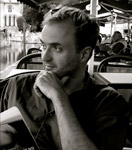 Lecturer: David Boyd Hancock has an MA in the History of Art and a PhD in British History. He is the author of a number of books, including Paul Nash (2002) and A Crisis of Brilliance: Five Young British Artists and the Great War (2009), and has lectured widely at galleries and museums, including Tate Britain, the National Portrait Gallery, the Royal Watercolour Society and Pallant House.
Lecturer: David Boyd Hancock has an MA in the History of Art and a PhD in British History. He is the author of a number of books, including Paul Nash (2002) and A Crisis of Brilliance: Five Young British Artists and the Great War (2009), and has lectured widely at galleries and museums, including Tate Britain, the National Portrait Gallery, the Royal Watercolour Society and Pallant House.
8 February 2012 – A Thousand Years of History: Medieval Cathedrals as Time Machine
Using photos, contemporary manuscripts and paintings this lecture shows the English cathedrals as ‘time machines’ to the medieval period, tracing their story from the birth of English Christianity in about 600 AD, through the great rebuilding that followed the Conquest of 1066, to the decades around a century later when Gothic was invented. The story continues through the cults and traumas of the 14th century and into the dynastic struggles of the late medieval era; struggles which eventually tore apart the very world that created the cathedrals.
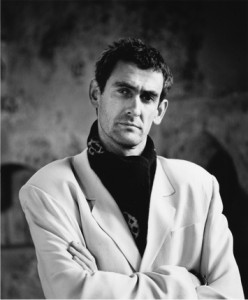 Lecturer: Jon Cannon holds a degree in the History of Art from Sussex University and has worked for the Royal Commission on the Historical Monuments of England and English Heritage. He has presented the BBC’s How to Build a Cathedral, and is the author of Great English Cathedrals and the World That Made Them (2007). He lectures and leads tours on medieval church art, architecture and history.
Lecturer: Jon Cannon holds a degree in the History of Art from Sussex University and has worked for the Royal Commission on the Historical Monuments of England and English Heritage. He has presented the BBC’s How to Build a Cathedral, and is the author of Great English Cathedrals and the World That Made Them (2007). He lectures and leads tours on medieval church art, architecture and history.
14 March 2012 – Imperial Purple to Denim Blue: the colourful history of textiles
Today we take colour in textiles for granted, and they are perhaps perceived as nothing more than ephemeral fashion. However, the story of colour in textiles is both complex and fascinating. It was, after all, the textile industry which was the principal contributor to national wealth in many economies at one time or another. This story ranges widely, across different time periods and geographic locations, it is peopled by skilled craftsmen, adventurers, Popes, rulers and the scientifically curious. It is a story of laws, wars, taxes, prohibitions, secrecy, serendipity and, of course, sex. This lecture gives an overview of a topic that is not often addressed and yet which has something of interest to every one of us.
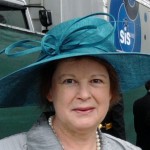 Lecturer: Susan Kay-Williams is Chief Executive of the Royal School of Needlework. She has a degree in English and American Literature from Cardiff University and a Masters on the Stage history of Shakespeare’s Henry VI trilogy from the Shakespeare Institute (Birmingham); followed by a PhD on the impact of the external environment on charity marketing and fundraising at CASS Business School. She is currently writing a book on the history of colour in textiles for publication in 2012.
Lecturer: Susan Kay-Williams is Chief Executive of the Royal School of Needlework. She has a degree in English and American Literature from Cardiff University and a Masters on the Stage history of Shakespeare’s Henry VI trilogy from the Shakespeare Institute (Birmingham); followed by a PhD on the impact of the external environment on charity marketing and fundraising at CASS Business School. She is currently writing a book on the history of colour in textiles for publication in 2012.
11 April 2012 – From Veneering to Marquetry: Furniture decoration 1675 to 1730
This lecture covers the history, techniques and uses of veneering, inlay, parquetry and marquetry in decorating fashionable and expensive items such as cabinets, tables, mirrors and long case clocks between the period 1675 to 1730. The important contribution made during this period by foreign craftsmen and their styles and techniques will also be referred to.
 Lecturer: Janusz Karczewski-Slowikowski is a freelance lecturer and researcher in English furniture history and an antique dealer, having retired from a 35 year-long career in Higher Education. Such was his interest in collecting that he became known as the dealer who bought but never sold. His lectures seek to explain furniture in terms of the skills and materials employed in its design and construction and its socio-economic significance.
Lecturer: Janusz Karczewski-Slowikowski is a freelance lecturer and researcher in English furniture history and an antique dealer, having retired from a 35 year-long career in Higher Education. Such was his interest in collecting that he became known as the dealer who bought but never sold. His lectures seek to explain furniture in terms of the skills and materials employed in its design and construction and its socio-economic significance.
9 May 2012 – London’s Country Houses
Due to the rapid expansion of London, many houses that were originally in nearby villages are now within Greater London. Some, such as 17th century Ham House or neo-classical Osterley, are well known. Others, such as Marble Hill in Twickenham and Chiswick House, can also be visited. A few remain in private hands and are rarely open, many others are offices or schools. This lecture, based on her recent book, looks at a selection of these houses, which were once the much-loved country retreats of courtiers, government ministers and City merchants.
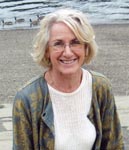 Lecturer: Caroline Knight is an architectural historian specialising in British Architecture of the 16th-18th centuries. She is a lecturer and teacher for NADFAS, the Royal Oak Foundation in the USA, the Courtauld Institute of Art Summer Schools, and elsewhere; and author of London’s Country Houses (2009).
Lecturer: Caroline Knight is an architectural historian specialising in British Architecture of the 16th-18th centuries. She is a lecturer and teacher for NADFAS, the Royal Oak Foundation in the USA, the Courtauld Institute of Art Summer Schools, and elsewhere; and author of London’s Country Houses (2009).
13 June 2012 – The great art patrons of Imperial Russia
Peter the Great started the Russian passion for collecting by bringing back a stuffed crocodile from his first trip abroad but it was Catherine the Great who was to achieve greater renown. She planned her buying sprees like military strategies and had to extend the Winter Palace to house the thousands of paintings which now make up the largest collection in the world. This lecture tells the story of the Russian monarchs and aristocrats who collected art and the occasional Faberge egg. But it also reveals how the Moscow merchants eventually upstaged the Tsars as art patrons on the eve of the Revolution. Here the main figures are Tretyakov, who founded the first gallery
of Russian art, and Shchukin and Morozov, who in the early 20th century built up unrivalled collections of modern Western art by painters such as Picasso and Matisse.
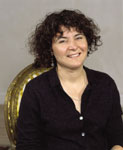 Lecturer: Rosamund Bartlett has a doctorate from Oxford, is currently Visiting Professor at Rose Bruford College of Theatre and Performance, and Visiting Research Fellow in the Music Department at King’s College London. She also teaches in the Department of Music Studies at the Guildhall School of Music and Drama and at the University of Oxford. Her books include Wagner and Russia (Cambridge UP), Chekhov: Scenes from a Life (Free Press), Literary Russia: A Guide (co-authored with Anna Benn), and Shostakovich in Context (Oxford, 2000). Her new book is Tolstoy: A Russian Life, and she is currently translating Anna Karenina for Oxford World’s Classics. Lectures at the Royal Opera House, the National Gallery, the V&A, the South Bank and Barbican Centres and broadcasts on the BBC and on Russian national radio.
Lecturer: Rosamund Bartlett has a doctorate from Oxford, is currently Visiting Professor at Rose Bruford College of Theatre and Performance, and Visiting Research Fellow in the Music Department at King’s College London. She also teaches in the Department of Music Studies at the Guildhall School of Music and Drama and at the University of Oxford. Her books include Wagner and Russia (Cambridge UP), Chekhov: Scenes from a Life (Free Press), Literary Russia: A Guide (co-authored with Anna Benn), and Shostakovich in Context (Oxford, 2000). Her new book is Tolstoy: A Russian Life, and she is currently translating Anna Karenina for Oxford World’s Classics. Lectures at the Royal Opera House, the National Gallery, the V&A, the South Bank and Barbican Centres and broadcasts on the BBC and on Russian national radio.

